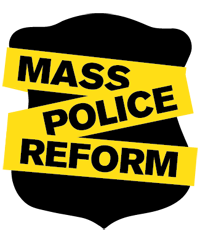Reform Overview
Target: US Department of Justice
One of the functions of the US Department of Justice is to enforce federal laws that address police misconduct including both criminal and civil statutes. These laws cover the actions of State, county, and local officers, including those who work in prisons and jails. In addition, several laws also apply to Federal law enforcement officers. The laws protect all persons in the United States (citizens and non-citizens). Learn More.
Reform Goals
- Investigate local police departments for misconduct
- Help local police departments develop policies to reduce complaints, use of excessive/deadly force and corruption
Proposed Reforms
- In Progress US Department of Justice Investigation of BPD and Assistance in the Reforming of Policy
- Help local departments develop policies to reduce complaints, use of excessive/deadly force and corruption
1. US Department of Justice Investigation of BPD and Assistance in the Reforming of Policy
Update December 2022: In Progress
While many calls for investigations into various departments have not been acted on, we have seen the DOJ launch an investigation in Worcester responding to requests from DA Rachel Rollins to investigate a pattern of misconduct.
Justice Department Launches Investigation of Worcester Police Department
The Boston Police Department has a long and well documented history of misconduct, injustice and troubled community relations, especially in its interactions with citizens of color. While many insist Boston has left a history of racist violence firmly in distant past, little has been done to address the history and culture of the police department.
Since 1972 there have been at least 40 people shot and killed and at least 15 more in police custody or during an encounter with the BPD. There have been cases of brutality, excessive force and corruption, some costing the city millions of dollars in settlements and judgments.
A 2014 ACLU study into the BPD’s Stop and Frisk practices found “The Boston Police Department has engaged in racially discriminatory stop-and-frisk practices that have disproportionately targeted Black and Latino communities.”
We call upon the US DOJ to launch a Pattern-or-Practice Investigations into the Boston Police Department.
Case Study: Baltimore
Department of Justice Finding
News Coverage
- Department Of Justice May Look Into Baltimore Police Brutality October 6, 2014
- DOJ to work with Baltimore City police on reform October 20, 2014
- U.S. Dept. of Justice reveals plans to review Baltimore Police Dept. October 20, 2014
Additional Resources
- DOJ Community Oriented Policing Services
- How Department of Justice Civil Rights Division Conducts Pattern-or-Practice Investigations
- Addressing Police Misconduct Laws Enforced By The Department Of Justice
- Conduct of Law Enforcement Agencies
- Crime Prevention Research Review No. 10: “Legitimacy in Policing” Date: 06/01/2013
Author(s): Lorraine Mazerolle, Sarah Bennett, Jacqueline Davis, Elise Sargeant, Matthew Manning - “Collaborative Reform Model: A Review of Officer-Involved Shootings in the Las Vegas Metropolitan Police Department” Date: 11/01/2013
Author(s): James K. Stewart, George Fachner, Denise Rodrigues King, Steve Rickman - United States Civil Rights Commission “Police Practices and Civil Rights in America” 2000
(a follow-up to its classic 1981 report, “Who is Guarding the Guardians?”) - 17 Justice Dept. Investigations Into Police Departments Nationwide September 20, 2011
Status
- On May 4, 2015 we held a press conference and sent off a letter to the DOJ asking that they investigate and help reform the BPD.
- On June 22, 2015 we received a letter from the DOJ alerting us that our request is under review. The next step will be to send in additional information of cases that have occurred since May 4th. Learn More
- On June 30, 2015 we sent a second letter to the DOJ. Learn More
How You Can Help
The DOJ is currently reviewing our request.
Learn how to file a complaint with the U.S. Department of Justice’s (DOJ) Civil Rights Division.
Get involved at the State and City Level.
